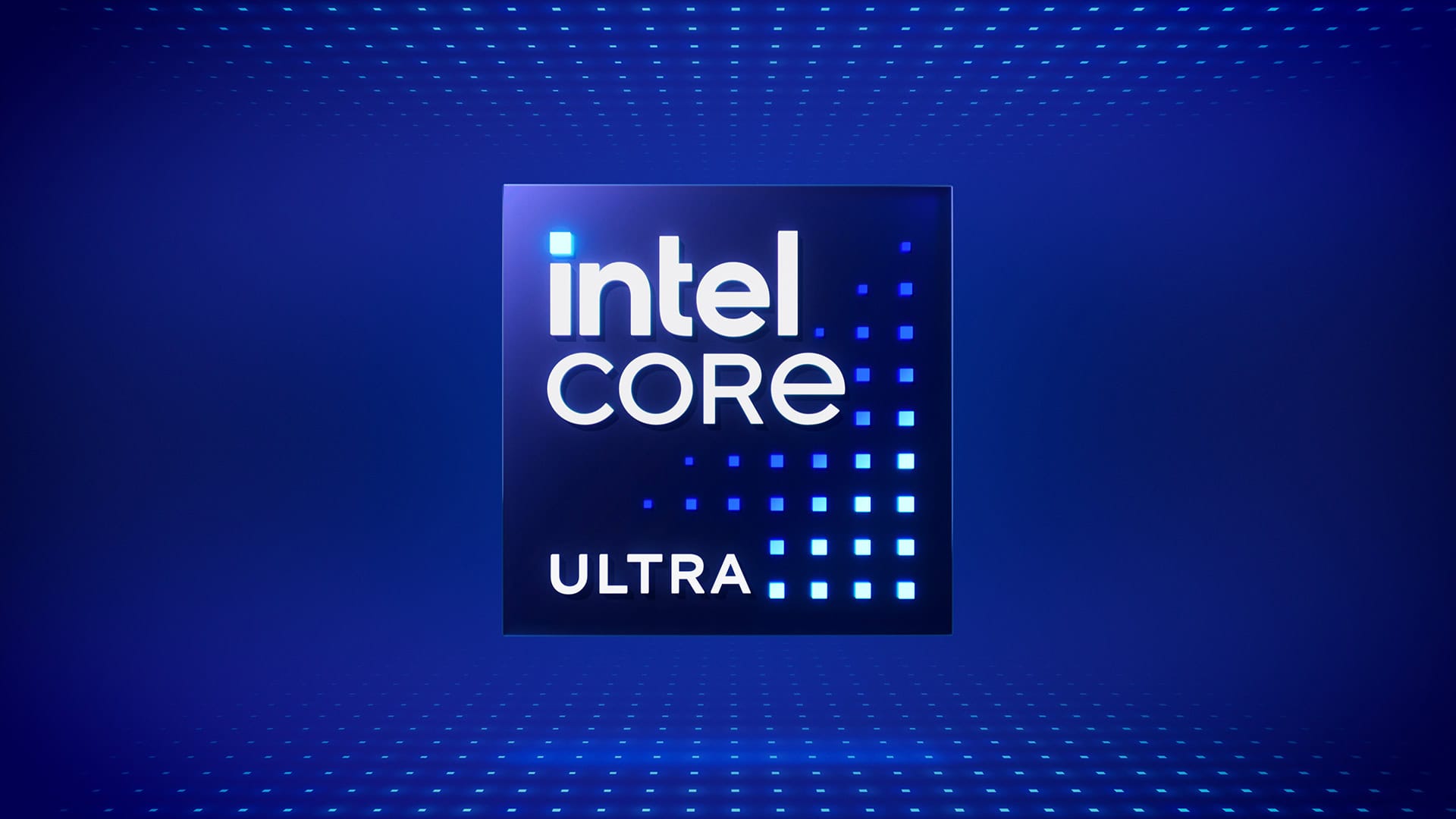Arrow Lake is the first Intel desktop family with a dedicated neural processing unit, arriving just in time for Windows 12’s local Copilot features and Adobe’s on-device generative tools. Combined with a modern I/O stack—native Wi-Fi 7, full-speed USB-4, and four PCIe 5.0 lanes for NVMe drives—these chips push Intel’s desktop platform into genuinely next-gen territory.
What’s New at a Glance
| Launch Window | Desktop “K” SKUs: Oct 24 2024 |
|---|---|
| Top Chip | Ultra 9 285K – 24 cores (8 P + 16 E) to 5.7 GHz, 36 MB L3 |
| Socket / Chipsets | LGA 1851 • Z890 / B860 / H810 |
| Memory | DDR5-4800 base, DDR5-8000+ via XMP (DDR4 is gone) |
| Process & Layout | 3 nm Lion Cove P-cores + 5 nm Skymont E-cores on TSMC chiplets, stitched with EMIB |
| Key Extras | 13 TOPS NPU, Xe-LPG iGPU, PCIe 5.0 x16 GPU + x4 SSD, Wi-Fi 7 & USB-4 baked into the chipset |
Why Arrow Lake Stands Out
- AI Muscle on Tap
The integrated NPU handles real-time transcription, Stable Diffusion image generation, and Premiere Pro’s Sensei effects without waking the GPU. A stock Ultra 9 285K plus its NPU driver turns out a 512-pixel diffusion image in under nine seconds while sipping just 35 W—perfect for creators who hate ramping fans during inspiration bursts. - Half the Power, Similar Throughput
Intel targeted “Raptor Lake performance at 50 % power,” and shipped silicon comes close. Cinebench 2024 scores from a 285K average only 2–3 % behind a 14900K while pulling ~160 W instead of 300 W. Builders swapping three-year-old Alder or Comet Lake rigs can ditch 360 mm AIOs for a quiet 240 mm or even a large air cooler. - Smoother, Not Just Faster, Frames
Early microcode (0x114) tightened 1 % lows by ~12 % in open-world titles where the Windows scheduler used to ping-pong threads between P and E cores. The result is less hitching in games like Starfield and Elden Ring—an improvement you can feel even when average FPS doesn’t rocket ahead. - Platform Headroom
LGA 1851 boards POST faster, train DDR5 more reliably, and finally retire the eSPI bridge that throttled rear-panel PCIe on older chipsets. Enthusiast Z890 boards already validate DDR5-8600 kits, and Intel’s firmware roadmap hints at 8800+ stability once 0x116 microcode rolls out this summer.
Deep-Dive Performance Snapshot (July 2025)
| Workload | Ultra 9 285K | Ultra 7 265K | Ryzen 9 9950X3D |
|---|---|---|---|
| 1080p Gaming (RTX 4090, High) | 100 fps | 96 fps | 134 fps |
| Blender Classroom | 6 min 02 s | 6 min 49 s | 5 min 52 s |
| HandBrake AV1 (4K→1080p) | 308 fps @ 175 W | 277 fps @ 150 W | 299 fps @ 225 W |
| Stable Diffusion (512-px, SD 1.5) | 8.8 s | 9.7 s | 9.0 s |
| Idle→Full-Load Power Delta | 158 W | 142 W | 210 W |
Arrow Lake’s competitive edge is consistency and efficiency. AMD’s 3D V-Cache parts still own raw gaming throughput, but Intel closes the gap in mixed creator workloads and wins outright on plug-to-wall energy draw.
SKU Line-Up & Smart Pairings
| CPU | Cores (P+E) | Base / Boost | NPU | MSRP | Ideal Motherboard |
|---|---|---|---|---|---|
| Ultra 9 285K | 8 + 16 | 4.2 / 5.7 GHz | 13 TOPS | $589 | Asus ROG Maximus Z890 Hero (OC) |
| Ultra 7 265K | 8 + 12 | 4.0 / 5.5 GHz | 11 TOPS | $449 | MSI MPG Z890 Carbon Wi-Fi |
| Ultra 5 245K | 6 + 8 | 4.0 / 5.3 GHz | 9 TOPS | $309 | Gigabyte Z890 Aorus Elite Wi-Fi 7 |
| Ultra 5 225F | 4 + 6 | 3.8 / 4.9 GHz | 8 TOPS | $229 | ASRock B860 Steel Legend Wi-Fi |
Every chip except the locked 225F carries an unlocked multiplier, and most B860 boards happily raise power limits. That makes the 65 W Ultra 9 285 (non-K) a sleeper hit for small-form-factor builds—remove its PL1 ceiling and you’re within five percent of a stock 285K while shaving 30 W from load draw.
Stability Must-Haves Before You Boot
- Microcode 0x114 or newer – fixes P-core voltage overshoot; 0x116 due Q3 2025 adds XMP 8400 support.
- ME Firmware 19.0.0.1827+ – critical for high-speed DDR5 stability.
- Intel NPU Driver 32.0.100.4082 – unlocks Copilot+ preview and OpenVINO offload.
- Windows 11 24H2 or newer – brings the updated hybrid scheduler and Wi-Fi 7 stack.
Buying a prebuilt? Insist the vendor flashes an April 2025 or later BIOS; first-run retail boards shipped on unstable betas.
Upgrade Verdict
- Running Alder Lake or older? Arrow Lake halves power use, unlocks PCIe 5.0 SSD lanes, and prepares your rig for Windows 12’s AI wave—go for it.
- Already on a 14700K/14900K? Unless you need the NPU or crave DDR5-8000+, the jump is modest.
- Pure FPS hunters deciding AMD vs Intel? Ryzen 9 9950X3D still tops the charts; AM5’s longer socket life is another plus.
- Creators with bursty workloads: The Ultra 7 265K’s single-core punch and cooler temps shorten render times without throttling your ears.
Arrow Lake doesn’t smash performance records, but it finally aligns Intel desktops with the power-efficient, AI-accelerated future—and it does so on a platform that feels genuinely next generation. For many builders, that combination is reason enough to make the leap.
Intel 15th Generation CPU List
| Name | Cores | Core Clock | Boost Clock | TDP |
|---|---|---|---|---|
| Intel Core Ultra 5 225F | 10 | 3.3 GHz | 4.9 GHz | 65 W |
| Intel Core Ultra 5 225 | 10 | 3.3 GHz | 4.9 GHz | 65 W |
| Intel Core Ultra 5 245K | 14 | 4.2 GHz | 5.2 GHz | 125 W |
| Intel Core Ultra 5 235 | 14 | 3.4 GHz | 5 GHz | 65 W |
| Intel Core Ultra 5 245KF | 14 | 4.2 GHz | 5.2 GHz | 125 W |
| Intel Core Ultra 7 265KF | 20 | 3.9 GHz | 5.5 GHz | 125 W |
| Intel Core Ultra 7 265K | 20 | 3.9 GHz | 5.5 GHz | 125 W |
| Intel Core Ultra 7 265F | 20 | 2.4 GHz | 5.3 GHz | 65 W |
| Intel Core Ultra 7 265 | 20 | 2.4 GHz | 5.3 GHz | 65 W |
| Intel Core Ultra 9 285K | 24 | 3.7 GHz | 5.7 GHz | 125 W |
| Intel Core Ultra 9 285 | 24 | 2.5 GHz | 5.6 GHz | 65 W |
Key Takeaways
- Intel’s 15th Gen Arrow Lake processors officially launched on October 24, 2024, following delays.
- The new CPUs improve power efficiency and performance upgrades over the previous generation.
- Arrow Lake requires a new motherboard platform LGA-1851
Overview of Intel 15th Gen Processors
Intel’s 15th Generation processors, codenamed Arrow Lake, represent a significant update to the company’s CPU lineup with new architectures and performance improvements. These processors are built on advanced manufacturing processes and bring several innovations to compete in the high-performance computing market.
Core Architectures and Innovation
The Arrow Lake processors feature Intel’s latest hybrid architecture design, combining performance and efficiency cores. This generation, marketed as Core Ultra 200S series, builds upon the foundation of previous generations while introducing new enhancements. The performance cores (P-cores) handle demanding tasks, while efficiency cores (E-cores) manage background processes and lighter workloads.
Intel has implemented improved manufacturing techniques with these processors. Arrow Lake CPUs utilize Intel’s latest process node technology, which helps reduce power consumption while increasing performance potential.
The chipsets also include enhanced integrated graphics capabilities and AI acceleration features. Intel has focused on improving the chip’s power efficiency, which is particularly important for mobile devices and energy-conscious desktop users.
Expected Performance Enhancements
The 15th Gen processors are expected to deliver significant performance gains over previous generations. Early benchmarks suggest improvements in both single-core and multi-core performance metrics. These CPUs will likely offer better gaming performance and content creation capabilities.
Key improvements include:
- Higher clock speeds with better thermal efficiency
- Increased IPC (Instructions Per Clock) for faster computing
- Enhanced memory controller supporting the latest RAM technologies
- Improved integrated graphics performance
For gamers upgrading from older systems like the i9-9900K mentioned in search results, the jump to 15th Gen should provide noticeable performance gains. The new processors will support the latest PCIe standards and faster memory, further enhancing overall system performance.
Intel’s Position in the Market
Intel faces strong competition in the CPU market, primarily from AMD’s Ryzen processors. The 15th Gen Arrow Lake launch represents Intel’s effort to reclaim performance leadership and market share in both desktop and mobile segments.
The October 24, 2024 release date positions these processors for the holiday shopping season. This timing is strategic as Intel aims to capture consumer attention for high-performance computing needs.
Intel’s pricing strategy will be crucial as they balance performance claims against AMD’s offerings. The company continues to leverage its established relationships with PC manufacturers to ensure wide availability of systems featuring the new processors.
For enthusiasts and system builders, the 15th Gen processors will require new motherboards with updated sockets, representing a complete platform upgrade when coming from older generations.
Technical Specifications and Features
Intel’s 15th Gen Arrow Lake processors bring significant improvements in architecture, performance, and power efficiency. The upcoming CPUs introduce several technical advancements across various aspects from manufacturing process to core design and memory support.
Process Node and Transistor Design
Arrow Lake CPUs will utilize a more advanced process node compared to their predecessors. Reports suggest these processors may implement a hybrid manufacturing approach with Intel’s own advanced node technology. This represents an important step in Intel’s semiconductor fabrication roadmap.
The transistor design has been optimized for better power efficiency, which has been a focus area for Intel in recent generations. The improved process node should help reduce power consumption while maintaining or improving performance levels.
Intel has been working to close the gap with competitors in terms of manufacturing technology. The new design is expected to incorporate enhanced transistor architecture that enables better thermal management and higher sustainable performance in both desktop and mobile applications.
Cores and Multi-Core Performance
The 15th Gen processors continue Intel’s hybrid architecture approach with a mix of P-Cores (Performance) and E-Cores (Efficiency). This design allows for better workload distribution and improved multi-tasking capabilities.
The P-Cores handle demanding, high-priority tasks while E-Cores manage background processes and lighter workloads. This arrangement helps optimize both performance and power consumption.
Multi-core performance is expected to see significant gains over the previous generation. The processors will support multi-threading technology, allowing each core to handle multiple tasks simultaneously.
Intel is focusing on enhancing both single-thread and multi-thread performance with Arrow Lake. Improvements to the core architecture and larger cache sizes should deliver better performance across various applications, from gaming to content creation.
Memory Support and Technology
Arrow Lake processors will support DDR5-6400 memory, providing increased bandwidth and better performance for memory-intensive applications. This represents an upgrade from previous generations and helps future-proof systems built with these CPUs.
The platform will include PCIe 5.0 support, enabling faster data transfer rates for compatible storage devices and expansion cards. This technology doubles the bandwidth compared to PCIe 4.0, allowing for better performance with next-generation SSDs and graphics cards.
Memory controller improvements are also expected to reduce latency and improve overall system responsiveness. The enhanced memory support will be particularly beneficial for professional workloads like video editing, 3D rendering, and data analysis.
Intel has designed these memory subsystems to better handle the demands of modern applications, which increasingly require fast and efficient memory access to achieve optimal performance.
Compatibility and Platform Integration
Intel’s 15th Generation Arrow Lake processors will require new hardware for compatibility. The shift brings major changes to socket design and motherboard requirements, affecting upgrade paths for PC builders.
LGA 1851 Socket Design
Intel’s 15th Gen Arrow Lake CPUs will use a new LGA 1851 socket, moving away from the LGA 1700 used by 12th through 14th generation processors. The new socket features 151 more pins than its predecessor, enabling enhanced power delivery and connectivity options.
The physical dimensions of LGA 1851 have been modified to accommodate the updated architecture. This change means existing CPU coolers designed for LGA 1700 will likely require new mounting brackets or complete replacement.
Intel designed the new socket to better handle power requirements for the Arrow Lake architecture, particularly for efficiency cores and integrated graphics capabilities.
Motherboard and Chipset Support
New 700-series motherboards will be required for Arrow Lake processors. These boards will feature the Z790, H770, and B760 chipset refreshes specifically designed to support the 15th Gen CPUs and their platform features.
The updated motherboards will offer enhanced DDR5 memory support with no backward compatibility for DDR4, unlike some previous generations. Memory speeds are expected to reach 6400MT/s as standard, with some premium boards supporting even higher frequencies.
PCIe 5.0 support remains a key feature, with most mid-range and high-end boards offering PCIe 5.0 for both graphics and storage. Entry-level options may limit full PCIe 5.0 capabilities to the primary GPU slot.
Motherboard manufacturers are expected to begin releasing compatible models close to the CPU launch date, anticipated in October 2024.
Anticipated Release and Industry Impact
Intel’s 15th Gen Arrow Lake processors are poised to make a significant entry into the CPU market. The upcoming release represents an important moment for Intel as it continues to compete with AMD and aims to strengthen its position in the processor marketplace.
Projected Launch Timeline
According to recent information, Intel will release its 15th Gen Arrow Lake processors (also known as Core Ultra 200S series) on October 24, 2024. This date has been confirmed after earlier reports of delays in the launch schedule.
Desktop models will likely appear first, with laptop versions following later. Some sources suggest that while the CPUs will launch in October, widespread availability of laptops featuring these new processors might not happen until early 2025.
Intel has traditionally staggered its releases, introducing high-end models first before expanding to mid-range and entry-level options. This pattern will likely continue with Arrow Lake.
Previous launch patterns indicate that we might see:
- High-end K-series CPUs in October 2024
- Mainstream models in late 2024
- Budget options in early 2025
Competitive Landscape Analysis
The timing of Intel’s 15th Gen release is strategic in relation to AMD’s product cycle. AMD’s Ryzen 8000 series processors have been gaining market share, putting pressure on Intel to deliver improvements.
Key competitive factors include:
- Performance gains: Arrow Lake needs to show significant improvements over both 14th Gen Intel chips and AMD’s offerings
- Power efficiency: An area where AMD has often held an advantage
- Platform features: New motherboards with updated connectivity options
Leaks suggest Intel is focusing on both performance and efficiency improvements. The new chips are rumored to use Intel’s updated architecture on an advanced manufacturing process.
Market analysts predict that if Arrow Lake delivers on its rumored specifications, Intel could regain some market share lost to AMD in recent years. The success of this launch could be crucial for Intel’s competitive position through 2025.
Frequently Asked Questions
Intel’s upcoming 15th generation processors have generated significant interest among tech enthusiasts and consumers alike. These CPUs bring new architecture, performance improvements, and other changes that buyers should understand before making purchasing decisions.
What are the expected features of the upcoming Intel 15th generation processors?
Intel’s 15th gen Arrow Lake processors are expected to introduce cutting-edge architecture with improved power efficiency. The new CPUs will likely feature a hybrid core design similar to previous generations but with enhanced performance.
Reports suggest these processors will use Intel’s newest manufacturing nodes, potentially combining different process technologies for various chip components. This approach aims to maximize both performance and production efficiency.
The 15th gen CPUs may also include enhanced integrated graphics and improved AI acceleration capabilities, building upon Intel’s previous innovations in these areas.
When can consumers anticipate the availability of 15th gen Intel processors in laptops?
Based on current information, Intel’s 15th generation processors are expected to debut in late 2024. Desktop models typically launch first, with laptop variants following shortly after.
Consumers might see the first 15th gen-powered laptops entering the market in late 2024 or early 2025. Premium and gaming laptops usually receive the new processors first, with mainstream models adopting them later.
Major laptop manufacturers will likely announce their 15th gen models at CES 2025 if Intel meets its projected release timeline.
How will the performance of Intel’s 15th gen CPUs compare to the 14th gen?
While exact performance figures remain speculative, the 15th gen CPUs are expected to deliver notable improvements over the 14th gen models. Industry analysts predict performance gains in both single-core and multi-core workloads.
The new architecture should offer better performance-per-watt metrics, which is important for both desktop and laptop users. This efficiency improvement may lead to better thermal performance and potentially higher sustained clock speeds.
Gaming performance will likely see enhancements, particularly in CPU-bound scenarios and when paired with the latest GPUs.
What will be the new socket requirements for Intel’s 15th generation processors?
Intel’s 15th generation Arrow Lake processors will likely require a new motherboard socket, continuing Intel’s pattern of socket changes every few generations. This would mean consumers upgrading from older systems will need new motherboards.
The specifics of the socket design haven’t been fully confirmed yet, but it will need to accommodate the power and thermal requirements of the new processors. Intel typically designs new sockets to support improved power delivery and additional features.
Motherboard manufacturers are expected to release compatible boards alongside the CPU launch with various chipsets for different market segments.
What price range is expected for the Intel 15th gen CPUs upon release?
Pricing for Intel’s 15th gen processors will likely follow patterns established with previous generations. Entry-level models might start around $150-200, with mid-range options in the $300-400 range.
High-end mainstream processors could be priced between $400-600, while flagship models might reach $600-800 or higher. These prices typically decrease several months after launch as supply stabilizes.
External factors such as manufacturing costs, competition from AMD, and market conditions will influence the final pricing strategy Intel adopts.
Are there any significant architectural changes planned for the Intel 15th generation?
Arrow Lake processors are expected to feature significant architectural improvements over previous generations. Intel may implement enhanced core designs with higher instructions per clock (IPC) performance.
The CPU will likely continue using Intel’s hybrid architecture with a mix of performance and efficiency cores, but with refinements to each core type. The cache hierarchy might also see improvements to reduce latency and increase throughput.
Reports suggest Intel may incorporate more advanced packaging technologies, potentially using their latest Foveros or EMIB approaches to optimize chip design and performance.







